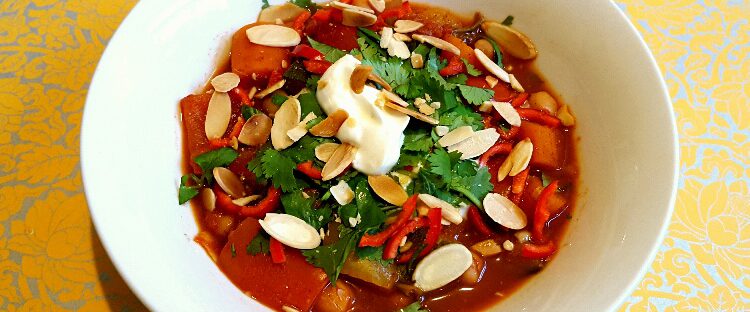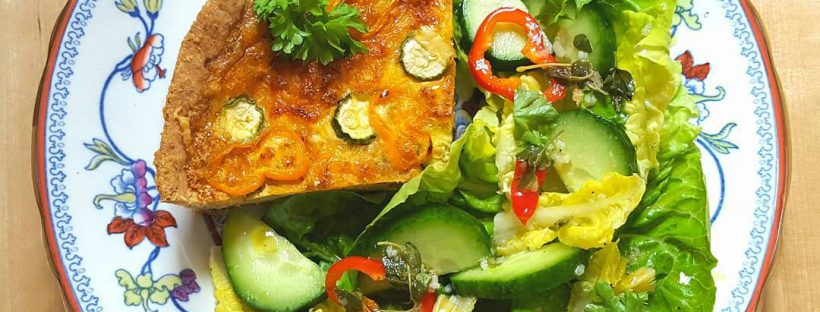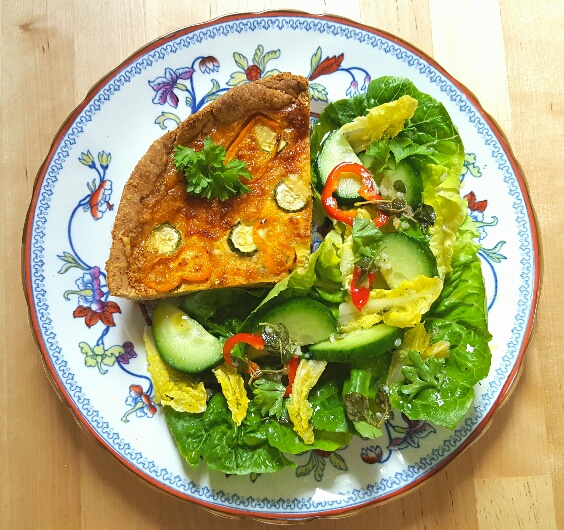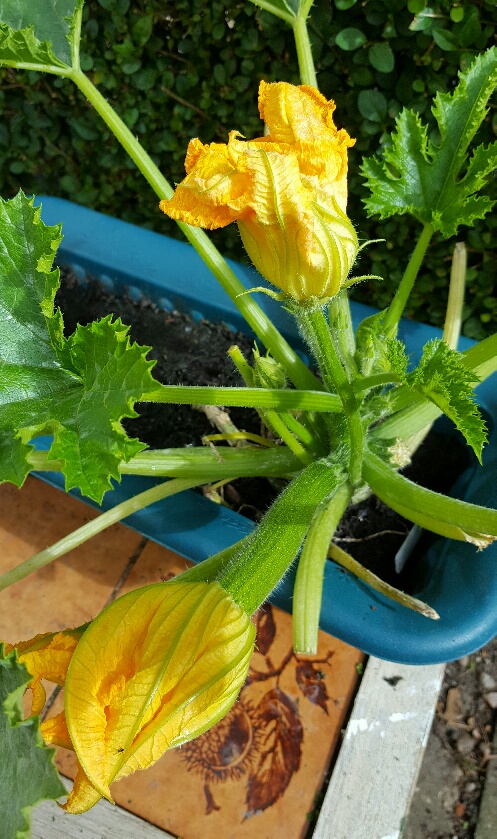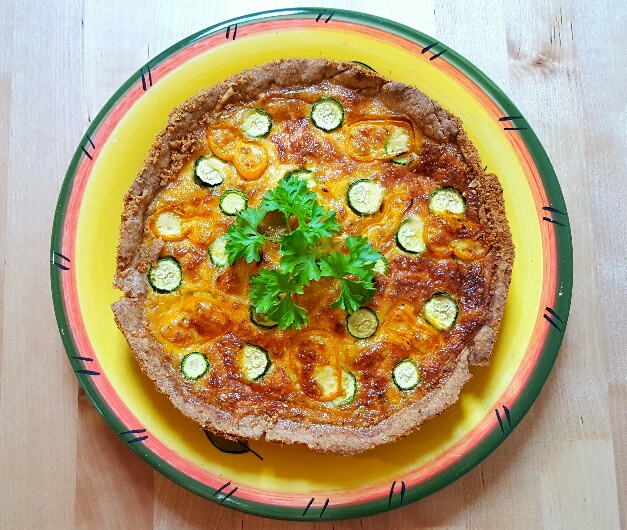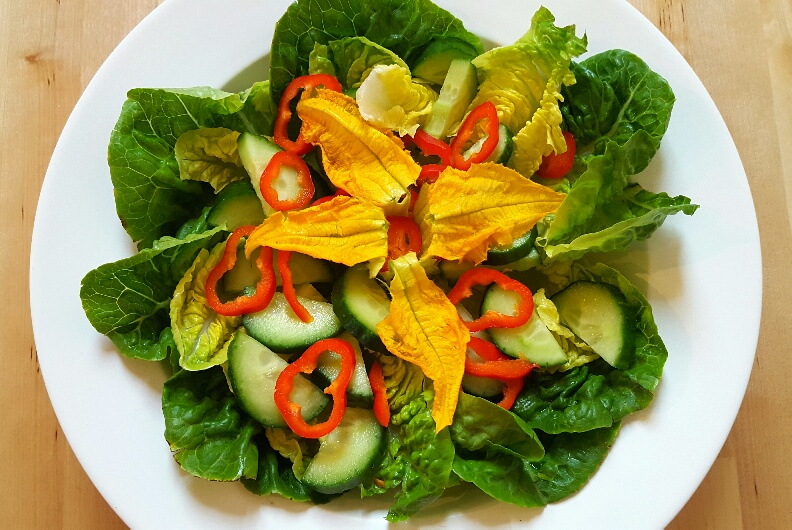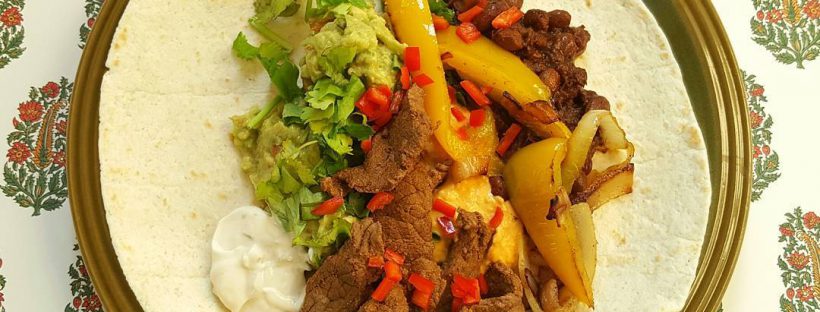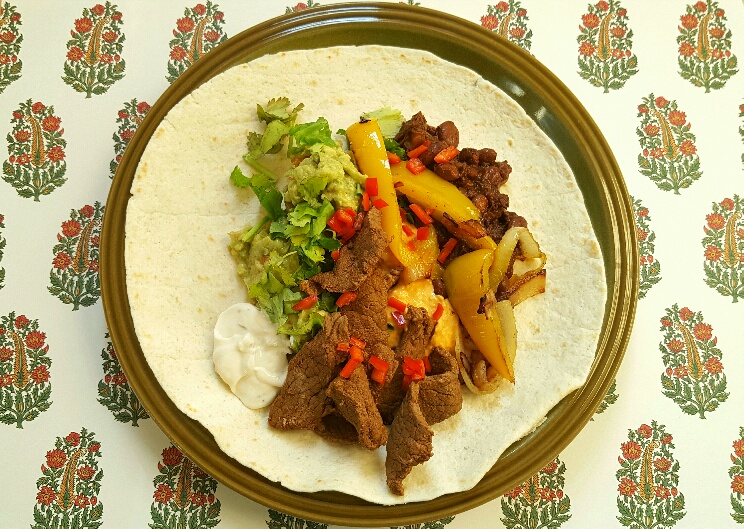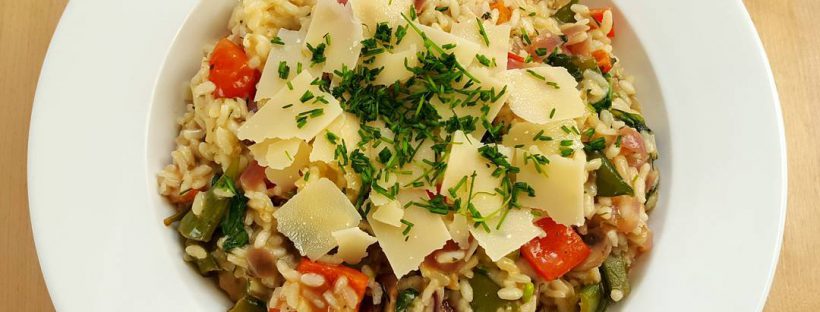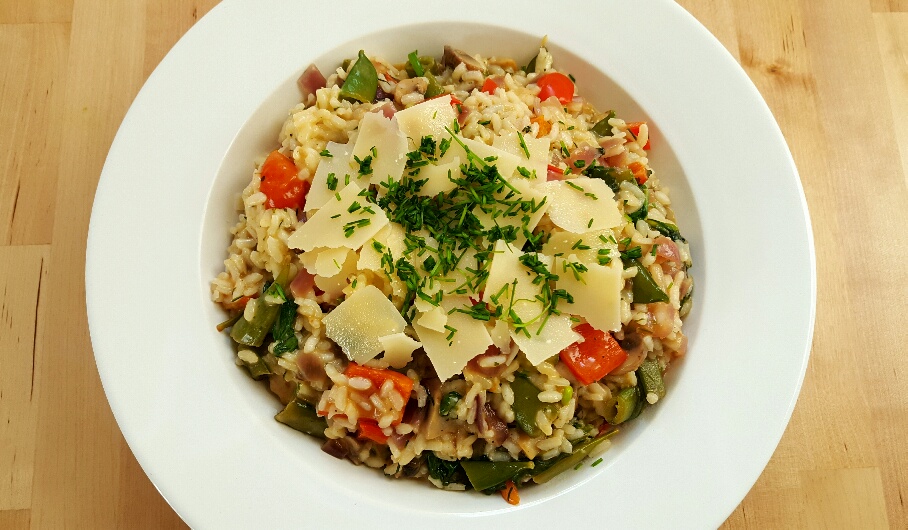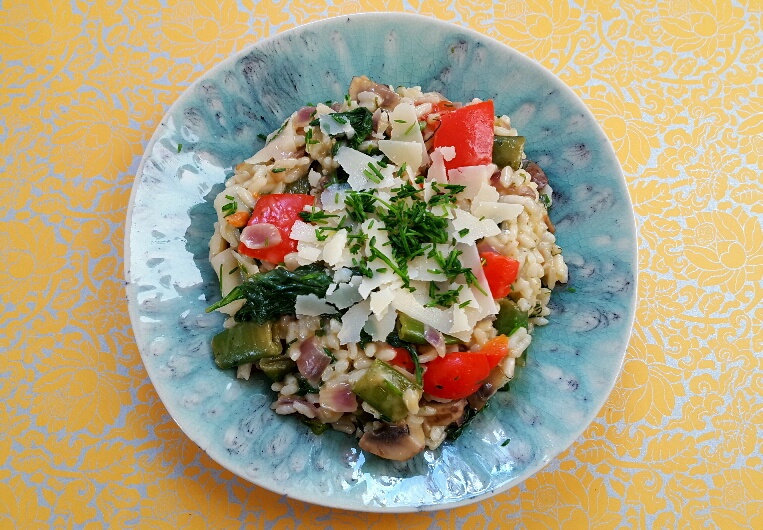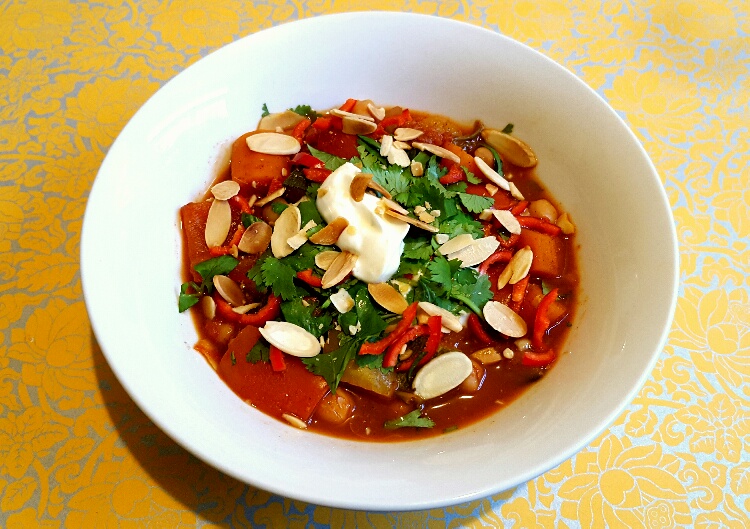
Vegan Moroccan Tagine by The Fat Foodie
One of my favourite meals is a Moroccan tagine, so the other day when I was searching for inspiration in the fridge and I realised that I had quite a few vegetables that needed used up I decided to make a vegan Moroccan tagine recipe. Whenever I’ve made tagines in the past I’ve always used lamb in them and cooked them in the slow cooker for hours, so it felt a bit odd to make this vegan Moroccan tagine within an hour. However, it turned out to be really tasty, with a wide variety of spiced vegetables incorporated within it, and it was pretty substantial thanks to the inclusion of chickpeas.
It’s easy for non-vegans to discount vegan food as being bland or boring because they think that the omission of meat from a dish equates with a lack of flavour, but I think the opposite can often be said of vegan food. A dish without meat can frequently surprise you because it allows the unique and delicate flavours of the vegetables, pulses and spices to sing due to the fact that they are not being overpowered by the strong taste of meat.
If you enjoy Moroccan flavours and fancy a light, but hearty vegan tagine then this is the recipe for you. One of the benefits of this meal is that the choice of vegetables can be altered to suit whatever you have in the fridge and whatever suits your FODMAP needs. You can tweak the recipe to suit your own tastes too, so add less cinnamon if you’re not a fan of it or feel free to go to town with the fresh chilli if you’ve got a mouth made of asbestos. It’s all about cooking something that works for you.
I was concerned in case it would be very spicy so I served my family’s tagines with a dollop of crème fraiche resting on top, but you could use coconut yoghurt if you can’t tolerate dairy and want to keep it a completely vegan Moroccan tagine. I also served mine with a generous scattering of toasted flaked almonds, a component I would wholly recommend you use because it adds a lovely nutty crunch to each spoonful you munch. You can serve it with rice, cous cous, flatbreads or on its own, but either way, it’s just a really easy, big ol’ comforting bowl of spicy, tasty veg that’s just the ticket on a cool, drizzly autumn evening.
Ingredients:
200g red bell pepper (cut into bite-sized pieces)
2 carrots (cut into bite-sized pieces)
150ml water
4 tbsps. soy sauce (or tamari – a gluten-free soy sauce)
1 tsp salt & 1/2 tsp ground black pepper
1 tsp asafoetida powder
2 tsps. ground cumin
1 tsp smoked paprika
2 tsps. ground cinnamon
1 tbsp. fresh ginger (minced)
½ a fresh red chilli (deseeded and thinly sliced, but optional)
The juice of ½ a lime
300g of tinned chickpeas (drained & well rinsed)
700g of tinned chopped tomatoes
To serve (optional):
20g flaked toasted almonds
Freshly chopped coriander
Chopped fresh chilli
Lactose-free crème fraiche or coconut yoghurt
Rice, cous cous or flatbreads.
Method:
This is a really easy one that doesn’t really require much work apart from the veg prep.
Prepare all of your ingredients as directed.
Put a large pan over a medium heat.
Put the soy sauce and water in the pot and then add all of your vegetables.
Cook for 10 mins and then add all of your spices and the lemon juice. Stir thoroughly and cook for another 10 mins.
Add the chickpeas and chopped tomatoes and stir well.
Reduce the heat to a slow simmer and cook for another 15-20 mins.
Put your flaked almonds in a dry frying pan and toast them, stirring frequently so that they don’t burn. Once they’re golden brown remove them from the frying pan.
Garnish each bowl of tagine with chopped fresh coriander and flaked almonds and add any other accompaniments as desired.
 Copyright protected by Digiprove © 2016
Copyright protected by Digiprove © 2016 